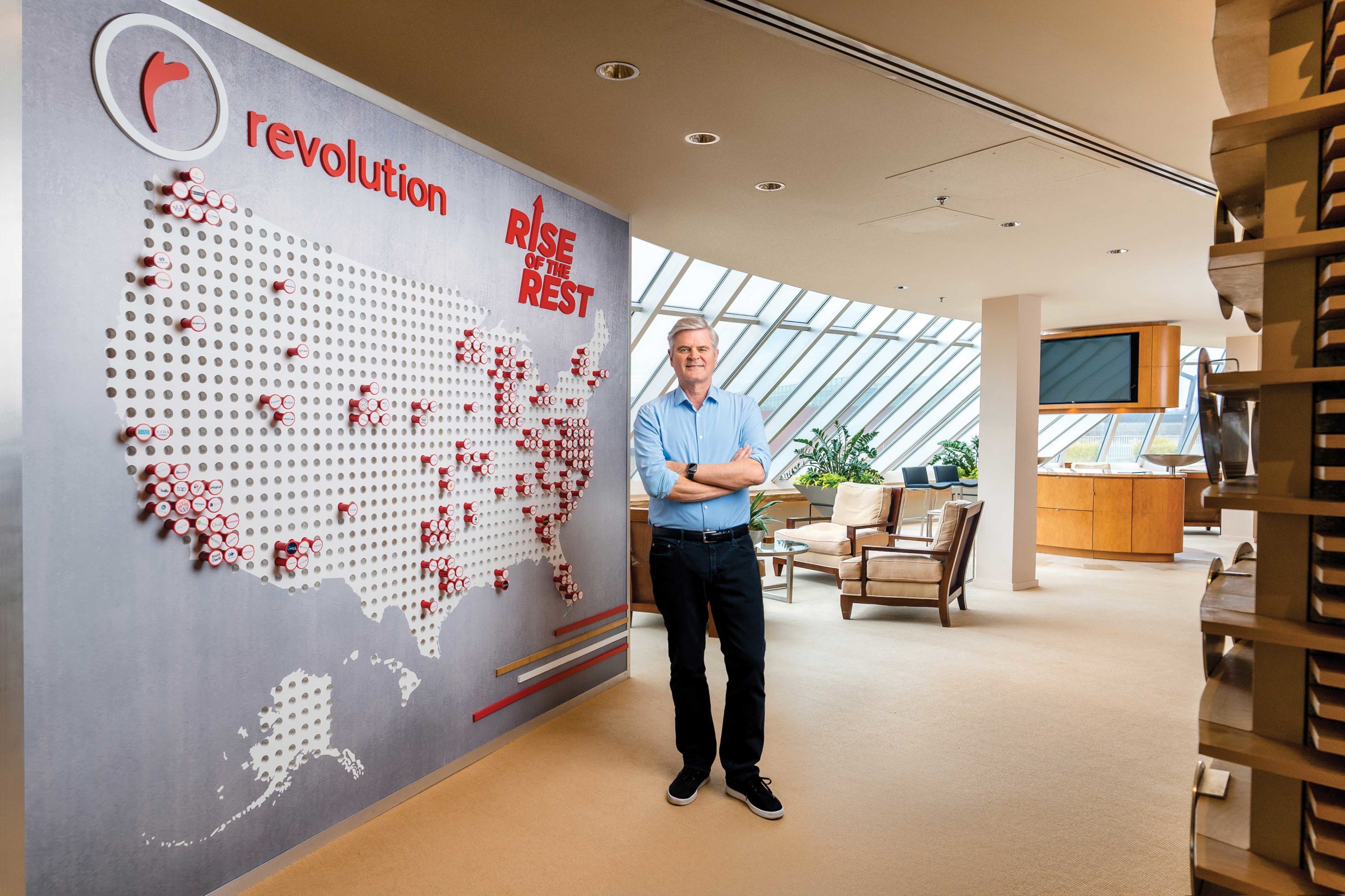Steve Case ’76 has long believed that entrepreneurs can start and scale businesses from just about anywhere. But historically, if they were not located in coastal tech hubs, such as New York or the Bay Area, they were often overlooked. Traveling around the country, he has seen that talent and ingenuity are everywhere – but opportunity is not.
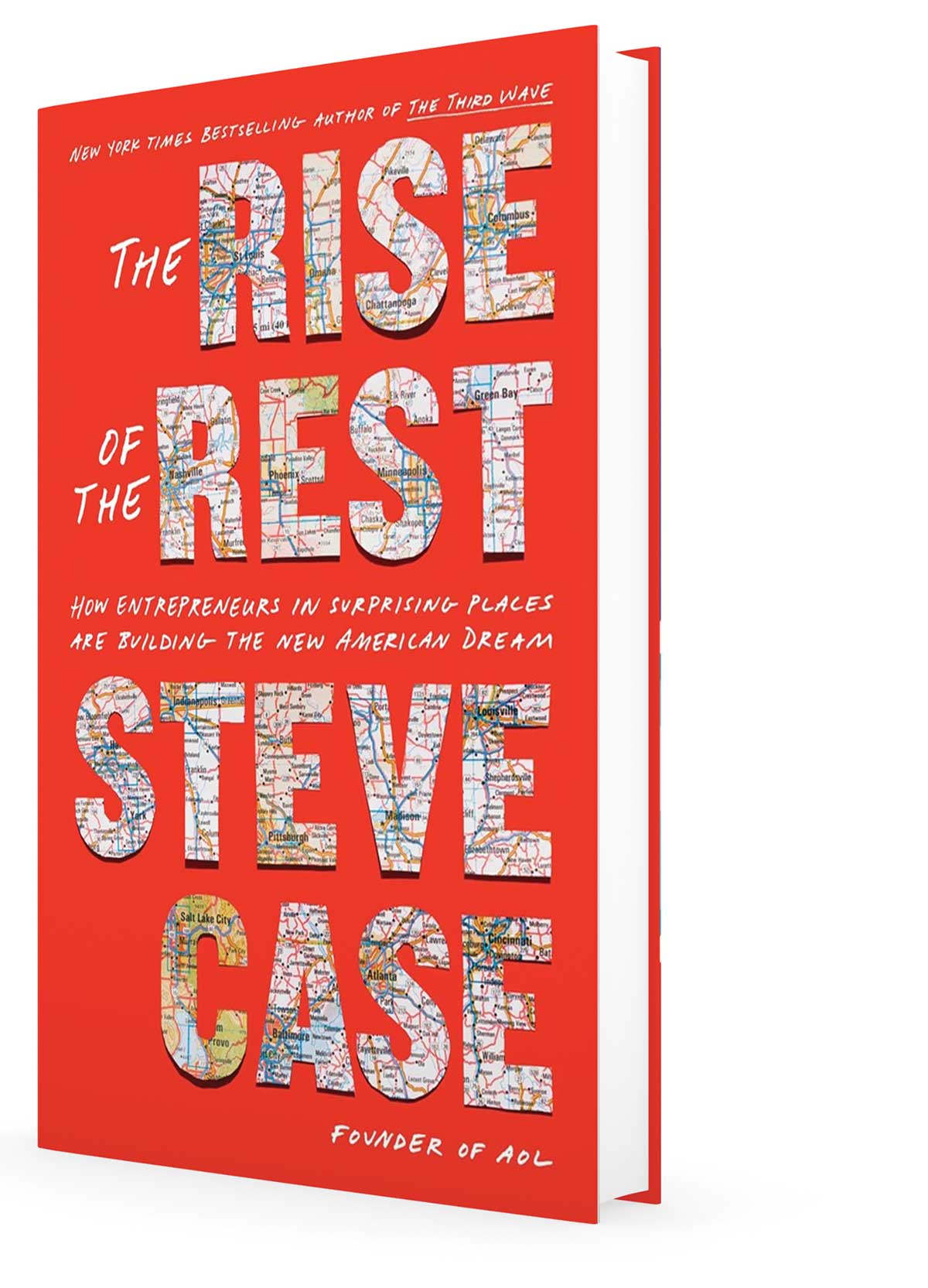
To amplify access to capital and opportunity throughout underserved communities, Case launched Revolution’s Rise of the Rest in 2014, an initiative that has now backed more than 200 companies in more than 100 cities, including Denver, Pittsburgh and Detroit.
In his newly released book, “The Rise of the Rest: How Entrepreneurs in Surprising Places Are Building the New American Dream,” he recounts powerful stories of the dynamic business founders he encountered while zigzagging the country on a big red tour bus. Along the way, he found inspiration in their big dreams and can-do attitudes and learned important lessons about the ways in which they have triumphed over adversity.
The famed entrepreneur and best-selling author shared his insights on how entrepreneurs in the middle of America can be the catalyst for economic growth, innovation – and galvanize a transformative startup ecosystem that knows no boundaries.
You have traveled thousands of miles to approximately 26 states in the name of creating economic opportunity and bringing hope to smaller communities in the middle of America – which are often overlooked by elite venture capital firms. What has been your biggest takeaway from this experience?
Many people are frustrated by the growing divisions in our country, but I’ve seen firsthand how policymakers, founders, tech talent, universities and corporations can work together to build a better future. Entrepreneurship can serve as a driving force for change. I’ve seen it again and again in cities like Bloomington, Minnesota where Deepender Singh started 75F and worked with commercial building owners to regulate air quality and temperature – a huge source of greenhouse emissions. And in Salt Lake City, when a company called Neighbor was poised to leverage the pandemic migration with a platform that offered locations to store goods and belongings in neighborhood empty spaces, garages, and storage facilities. So, my biggest takeaway is that times of great crisis can also inspire the greatest innovation and I remain optimistic about our future.
You have said that one of your goals with this initiative is to level the playing field so that everyone has a shot at the American dream. How do we support groups – women, people of color, immigrants – who traditionally have not had equitable access to resources?
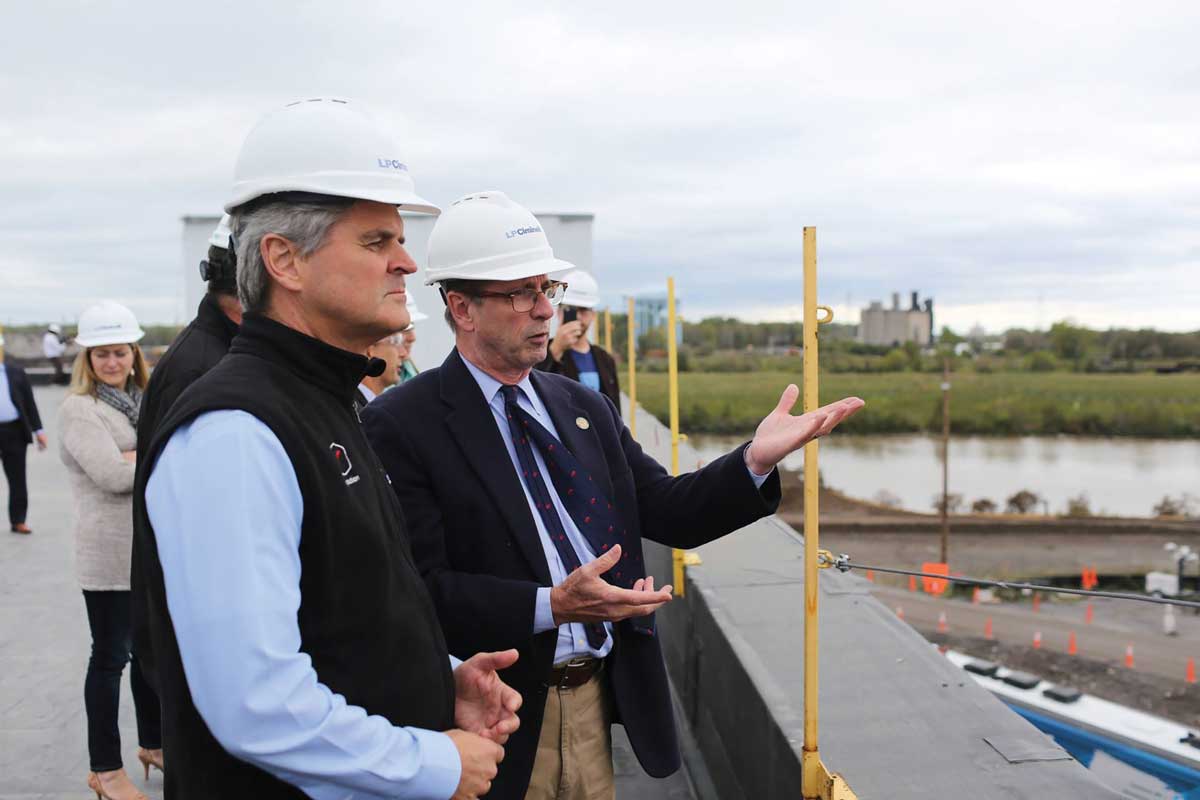
The data here is sobering, Black founders only get 1% of venture capital, 2% to Latino founders and less than 10% to female founders. We need to do better. To continue to make sure diversity is represented at all stages of venture leadership. To look at how to develop strong economic ecosystems such that people of color are participating in tech and innovation growth.
We also need to celebrate diversity. And finally, immigration policy needs to reflect the incredible contributions immigrants have made to our country’s innovation and technology ecosystem. One fourth of U.S.-based startups were launched by foreign born founders, in Silicon Valley, that number is closer to 50%.
What are some of the main obstacles to fostering entrepreneurship outside of traditional hubs, like San Francisco, New York or Boston?
Every community has its challenges in fostering a startup ecosystem, whether it be access to capital, lack of network density, or a risk-averse culture. I wrote the book to provide a roadmap on how to build robust startup ecosystems – and to deliver examples for would-be entrepreneurs or founders carrying out those plans in regions across the country.
Many regions have the basic ingredients for strengthening their entrepreneurial ecosystem including universities, corporations, government and investors and the next step is about bringing those key players together and determining how they can work together to best support startup growth within their community.
It’s also important to recognize that each region should lean into their unique strengths. For example, Carter Malloy moved back to Northwest Arkansas to start AcreTrader, a farmland investment platform. He felt it was critical to be near the industry and farmers with which he partnered.
How can regions leverage their individual strengths to become more competitive?
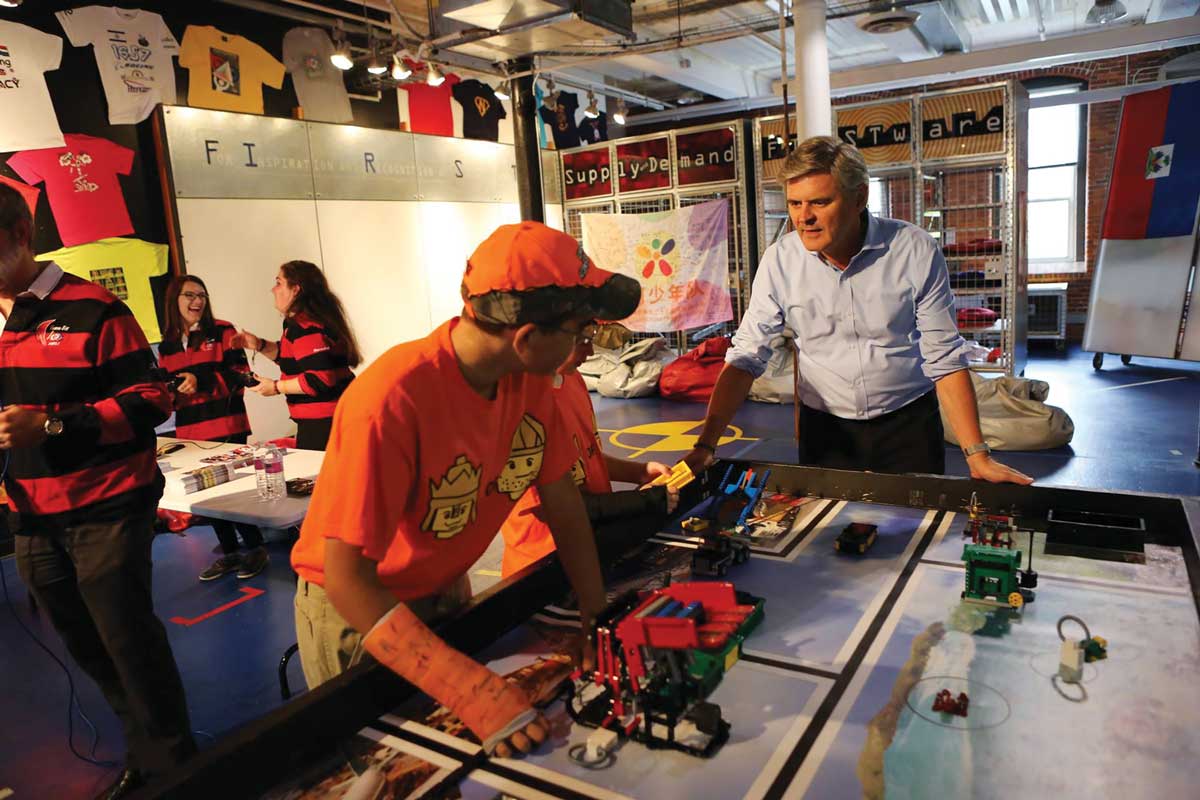
The cities that I highlight in the book have largely shied away from trying to replicate Silicon Valley, instead leveraging the unique attributes of their city to fuel startup success. Chattanooga, for example, sought to innovate on their legacy of freight and logistics. Minneapolis, Baltimore and Nashville are great grounds for healthcare given the hospitals, insurance companies and universities that are based in these cities. There is a strategic advantage in starting and building your company in a place where you can easily reach customers, secure related partnerships, and recruit talent with the right subject matter expertise.
How can education help entrepreneurs crystalize their aspirations?
Today, there has been more emphasis on STEM subjects, particularly coding, which is important. But in this age of what I like to call The Third Wave, in which the internet will transform the way we live and work, it’s so important to teach the skills that computers and machines cannot do. We need to encourage curiosity and collaboration and connecting the dots. In essence, we need to teach entrepreneurship as a core skill.
What role did growing up in Hawai‘i – and attending Punahou School – play in shaping your desire to help small communities?
It was great to grow up in Hawai‘i. It’s an amazing place that has been so innovative over centuries, ranging from navigation of the seas to irrigation of the lands. And it is of course the most recent state – coincidentally, moving from a territory to a state on my first birthday! And it was also great to be at Punahou. I was a member of the 13+ Year Club, starting in kindergarten, and living across from the tennis courts. Hawai‘i has a lot going for it, but because it is an island, often feels isolated. And it’s harder for entrepreneurs to start companies. That’s starting to change, in part because of Punahou’s efforts to encourage innovation.
Is there a particular entrepreneurship story that has stayed with you as you canvassed the middle of America?
I get this question often and it’s like asking me to pick my favorite child. There are so many stories, from a mom outside Indianapolis who was troubled by the Flint water crisis and founded a water-testing company to an entrepreneur who founded a company building greenhouses in eastern Kentucky and created hundreds of jobs. I highlight so many in this book.
You are an iconic entrepreneur who has inspired many. Who inspires you?
The entrepreneurs that I’ve met across the country solving real-world problems and building companies and supporting communities. They are why I do this work.
How has the Rise of the Rest initiative changed you on a personal level?
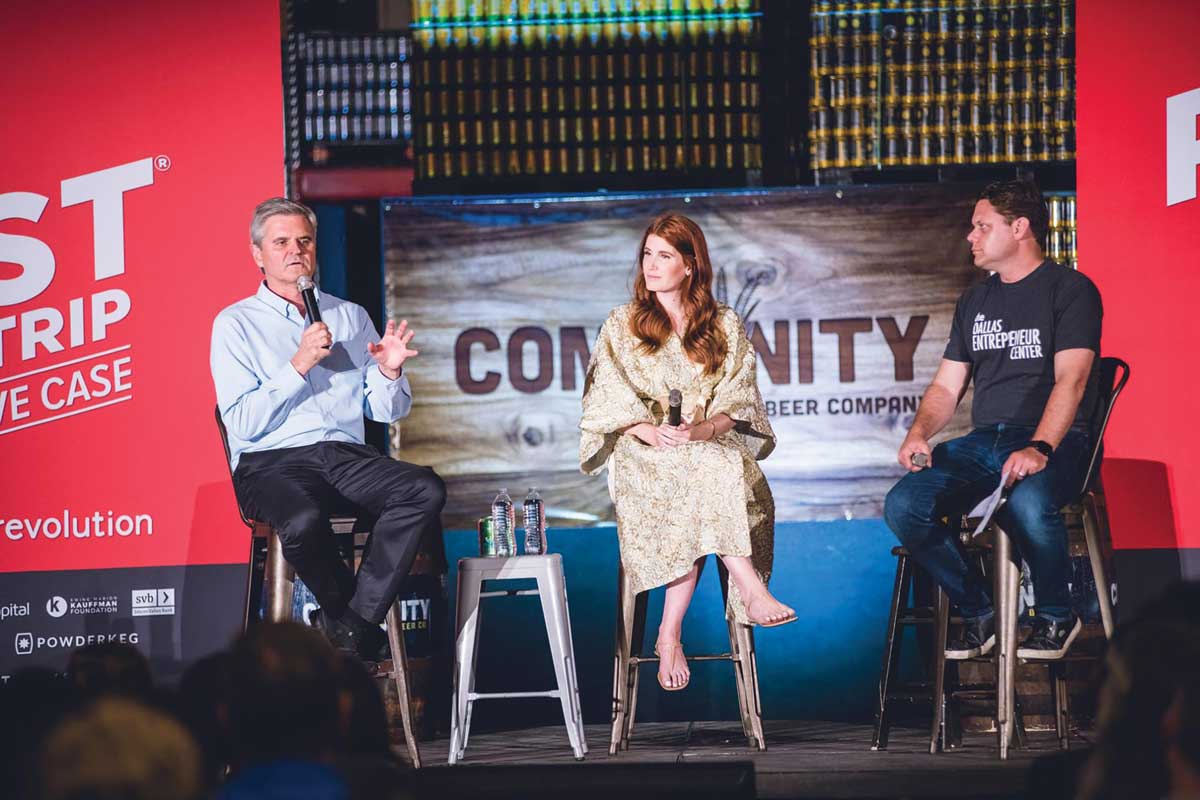
Our work to level the playing field for entrepreneurs started more than a decade ago, when I co-chaired the National Advisory Council on Innovation and Entrepreneurship (NACIE) and we launched the Startup America Partnership at the White House during the Obama Administration. (Side note: President Obama and I were in high school together at Punahou!)
Learning how important startups and new businesses are to job creation, I knew we had to build more support for entrepreneurs everywhere, not just in a few places. That pioneering effort helped build visibility and momentum around the opportunities for a more inclusive innovation economy, including more regional entrepreneurship. It’s very similar to my journey building AOL and helping to democratize access to information with the internet. It won’t happen overnight, but I’m optimistic we will get there together.

